You’ve seen tomatoes turned into capsules and wondered if the science is real or just clever marketing. The promise is simple: bottle the most useful bits of tomatoes-mainly lycopene-and make them easy to take every day. The reality sits in the middle. Tomato supplements won’t cure disease, but they can nudge a few key health markers in the right direction when you use them well.
Expect modest, measurable wins: small drops in blood pressure and LDL cholesterol, mild protection against sunburn, and possible support for men’s prostate markers. Food still comes first. Capsules help when diet is patchy, you want precise dosing, or you’re chasing a specific outcome.
TL;DR
- What they are: Concentrated tomato extracts rich in lycopene (the red carotenoid), sometimes with tomato oils and phytonutrients.
- What they can do: Modest improvements in blood pressure/LDL, mild skin photoprotection, and possible support for prostate markers (evidence varies).
- How to dose: Commonly 10-15 mg lycopene/day with a meal containing fat; some protocols use 20-30 mg short term under clinician guidance.
- Safety: Generally well tolerated; avoid high-dose use in pregnancy, be cautious with blood thinners, and stop if you get stomach upset or rash.
- Food vs capsule: Cooked tomatoes with oil often give excellent lycopene; capsules offer convenience and consistency when diet gaps exist.
Why tomatoes in a capsule? The big picture and the science
Tomatoes carry lycopene, a red pigment and antioxidant that sits in cell membranes and lipoproteins. Heat and oil make lycopene easier to absorb, which is why tomato paste or sauce often beats raw tomatoes on bioavailability. Supplements lean on that same logic: stabilised lycopene, often in oil-based softgels, for reliable intake.
Cardiovascular markers: Multiple meta-analyses between 2017 and 2023 report small but meaningful shifts. Lycopene doses around 12-25 mg/day are associated with modest reductions in systolic blood pressure (a few mmHg) and small drops in LDL cholesterol. These aren’t dramatic, but they add up alongside diet and exercise. Think fractional gains that stack.
Skin photoprotection: Small placebo-controlled trials (2001-2011) using tomato paste or lycopene-rich extracts found a higher minimal erythema dose (basically, skin needed more UV to redden) after 10-12 weeks. It’s not sunscreen. It’s an internal nudge that can complement sunscreen and sun-smart habits.
Prostate markers: Observational research links higher lycopene intake with lower prostate cancer risk, but it’s not a settled story. Small trials in men with prostate concerns show favourable shifts in PSA or biopsy markers in some cases, but results are mixed and sample sizes are small. UK/EU regulators have not approved disease claims for lycopene. Treat it as supportive, not curative.
Fertility: A 2019 UK double-blind trial (University of Sheffield) found that 14 mg/day of lactolycopene improved certain sperm quality measures in healthy men. It’s an encouraging signal, not a guaranteed outcome.
What regulators say: In the UK, supplements are regulated as foods. Health claims must fit the Great Britain Nutrition and Health Claims register. There’s no authorised disease claim for lycopene. That’s normal-most supplements don’t get disease claims. It doesn’t mean “does nothing”; it means “evidence isn’t strong enough for a label claim.”
Bottom line: There’s solid physiology, steady but modest clinical effects, and good safety at common doses. The best results show up when supplements ride alongside smart food choices, not instead of them.
Step-by-step: Picking the right product and dose
Before you buy, pin down your job-to-be-done. That keeps you from chasing shiny bottles. Here’s a simple path.
- Choose your target
- General wellness/antioxidant top-up
- Cardio markers (blood pressure/LDL) alongside lifestyle work
- Skin photoprotection support
- Men’s prostate marker support
- Pick the lycopene form
- Oil-based softgels (from tomato extract/oleoresin): usually best absorbed and most studied.
- Powders/capsules: fine, but take with a fatty meal to help absorption.
- Functional drinks/gummies: convenient, often pricier per mg.
- Set a dose
- Start: 10-15 mg lycopene daily with your main meal that contains fat (olive oil, dairy, nuts).
- Targeted protocols: 20-30 mg/day for 8-12 weeks may be used under clinician guidance for specific goals, then step back to 10-15 mg.
- Food-first approach: 2-4 servings of cooked tomato products weekly may deliver similar lycopene over a week, with extra nutrients to boot.
- Read the label
- Active: “Lycopene from tomato extract (Lycopersicon esculentum)” with a clear mg amount per serving.
- Carrier: oil-based (sunflower/olive oil) softgel suggests better uptake.
- Add-ons: Vitamin E can stabilise carotenoids; keep it modest (no megadoses).
- Allergens: check for soy, sesame, or gelatin if those matter to you.
- Quality checks
- Look for GMP manufacturing and independent testing (e.g., NSF/Informed-Sport) for purity and label accuracy.
- Transparent origin: states the source (tomato extract) and standardisation.
- Fresh stock: check expiry; carotenoids degrade with heat/time.
- Plan the timing
- Take with your fattiest meal of the day to boost absorption.
- Be consistent for at least 8-12 weeks before judging results.
Rule of thumb: if your diet already includes tomato paste or sauce a few times a week, you may only need 10 mg/day or nothing at all. If you rarely touch tomatoes, 15 mg/day is a pragmatic middle ground.

Results you can expect: timelines, scenarios, and trade-offs
Set expectations by the calendar. Carotenoids build slowly in tissues.
- Week 1-2: No big changes. Some people notice less post-meal reflux if they switch from acidic tomato sauces to softgels, but that’s more about the food than lycopene.
- Week 4-8: Early shifts in LDL and systolic blood pressure may start to show up (small but detectable if you track numbers).
- Week 8-12: Skin photoprotection effects tend to become measurable in studies. Men watching PSA might see a small change if it’s going to happen, but this is highly individual.
Scenarios:
- Busy professional who eats on the go: 15 mg softgel with lunch that includes a handful of nuts. Aim for consistent intake; pair with a Mediterranean-style pattern to compound the effect.
- Runner training through a bright summer: keeps sunscreen and hats as non-negotiable, and adds lycopene for an internal buffer. Not a license to bake in the sun.
- Man in his 50s with an eye on prostate health: reviews options with a GP or pharmacist, keeps screening up to date, and treats lycopene as a supportive habit, not a substitute for medical care.
Trade-offs:
- Food vs capsule: Food brings fibre, potassium, vitamin C, and flavor. Capsules bring precision and convenience. If you can cook, tomatoes plus olive oil is a win-win.
- Higher doses: May move numbers a bit faster but raise the risk of stomach upset. More isn’t always better.
- Stacking antioxidants: You can combine lycopene with vitamin E or other carotenoids, but keep doses sensible. Mega-dosing antioxidants hasn’t panned out well in trials.
Food vs supplement: content, cost, and bioavailability
Cooked tomato products can deliver impressive lycopene, especially when simmered with oil. Supplements help you hit an exact daily target without changing your menu.
| Source (typical serving) | Approx. lycopene (mg) | How to improve absorption | Approx. UK cost per serving (2025) |
|---|---|---|---|
| Tomato paste, 2 tbsp (≈33 g) | ~12 mg | Simmer with 1-2 tsp olive oil | £0.15-£0.25 |
| Passata/tomato sauce, 200 ml | ~10 mg | Cook with oil; avoid overboiling | £0.30-£0.60 |
| Fresh tomato, 1 medium | ~3 mg | Add olive oil (salad, bruschetta) | £0.20-£0.40 |
| Watermelon, 1 cup | ~7 mg | Eat with a meal containing fat | £0.50-£0.80 |
| Pink grapefruit, 1/2 | ~3 mg | Pair with yogurt or nuts | £0.40-£0.70 |
| Lycopene softgel, 10 mg | 10 mg | Take with main meal | £0.25-£0.40 |
| Lycopene softgel, 15 mg | 15 mg | Take with main meal | £0.30-£0.55 |
Notes:
- Numbers vary by brand, ripeness, and processing. The table gives ballpark figures so you can plan.
- Oil-based softgels are convenient when you don’t eat tomato dishes often.
- A jar of tomato paste can last the week and deliver plenty of lycopene for pennies.
Practical meal idea: Stir two tablespoons of tomato paste into a pan with olive oil, garlic, and herbs; toss with wholegrain pasta or beans. That’s roughly a 10-12 mg lycopene meal with fibre and protein.

Quick checklist, Mini‑FAQ, and next steps
Here’s your one-minute checklist for buying and using tomato supplements well:
- Target dose: 10-15 mg lycopene daily; higher short-term only with guidance.
- Form: oil-based softgel from tomato extract/oleoresin.
- Timing: take with a meal that includes fat.
- Quality: third-party tested, clear labelling, sensible add-ons.
- Safety: avoid in pregnancy at high doses; caution with blood thinners; stop if you get GI upset or rash.
- Diet: keep tomato dishes in your week; supplements are not a swap for veg.
Pro tips and pitfalls:
- If your capsule repeats on you (tomato burps), switch to a different brand or take mid‑meal, not on an empty stomach.
- Store away from heat and light. Carotenoids degrade in warm kitchens.
- If your blood pressure is already low, track readings when you start.
- Don’t stack with megadose antioxidants “just because.” Keep it simple.
Mini‑FAQ
- Does lycopene prevent prostate cancer? No one can promise prevention. Observational data suggest a link between higher lycopene intake and lower risk, but trials are mixed. Keep screening with your GP.
- Can lycopene replace sunscreen? No. It may raise your sunburn threshold a bit after 8-12 weeks, but you still need sunscreen, clothing, and shade.
- Is food better than capsules? If you regularly eat cooked tomato dishes with oil, you may not need a supplement. Capsules help when diet is inconsistent or you want a precise daily dose.
- Any side effects? Usually mild: stomach upset, nausea, or harmless skin orange tint with very high intakes. Stop if symptoms persist.
- Interactions? Be cautious with warfarin or antiplatelet meds; discuss with a pharmacist. If you’re scheduled for surgery, mention supplements at your pre‑op check.
- Pregnancy and breastfeeding? Food sources are fine. Avoid high‑dose supplements unless your clinician agrees.
- Allergy to tomatoes? Skip tomato‑derived extracts.
- When should I take it? With the fattiest meal of your day. Lycopene absorbs better with fat.
Next steps
- If your goal is heart health: combine lycopene with a Mediterranean‑style diet, regular walks, and sleep. Track BP and lipids after 8-12 weeks.
- If your goal is skin support: start 8-12 weeks ahead of peak sun exposure. Keep sunscreen and hats non‑negotiable.
- If your goal is prostate support: have a chat with your GP or pharmacist, keep routine checks, and consider 15 mg/day as a steady baseline.
- Not sure you need a supplement? Try the food route first: tomato paste twice a week, plus a tomato‑based soup or stew. See how that fits your life and budget.
Troubleshooting
- Upset stomach: switch brands, reduce dose to 5-10 mg for a week, and always take with food.
- No change after 12 weeks: check your diet quality and consistency, make sure you take it with fat, and verify the label’s actual lycopene content.
- On multiple medications: ask your local pharmacist to run an interaction check. Bring the exact product label.
- Vegetarian/vegan: most lycopene is plant‑derived; watch the capsule shell (look for vegan softgels).
- Athlete subject to testing: pick a product with Informed‑Sport certification.
Where the evidence sits (plain English): meta‑analyses suggest small reductions in LDL and systolic BP with lycopene doses around 12-25 mg/day; small RCTs show mild photoprotection after roughly 10 weeks; observational data and small trials hint at prostate support but don’t prove prevention. UK/EU authorities haven’t approved disease claims. That’s why expectations should be realistic: steady, not spectacular.
Quick template for your plan this month:
- Week 0: Choose an oil‑based 15 mg lycopene softgel; set a daily alarm tied to lunch or dinner.
- Week 1-2: Add one tomato‑based dish per week (soup, stew, pasta sauce). Track any GI reactions.
- Week 4: If your goal is cardio, check home BP (same time of day, seated). If you track lipids, plan a test at 10-12 weeks.
- Week 8: If skin support is your aim, keep sunscreen habits tight; you may notice slightly better tolerance to sun.
- Week 12: Review: any changes in numbers or how you feel? Decide whether to continue, reduce to 10 mg, or rely on food.
If you remember only one thing: pair lycopene with fat and patience. That’s how you actually get the benefit.

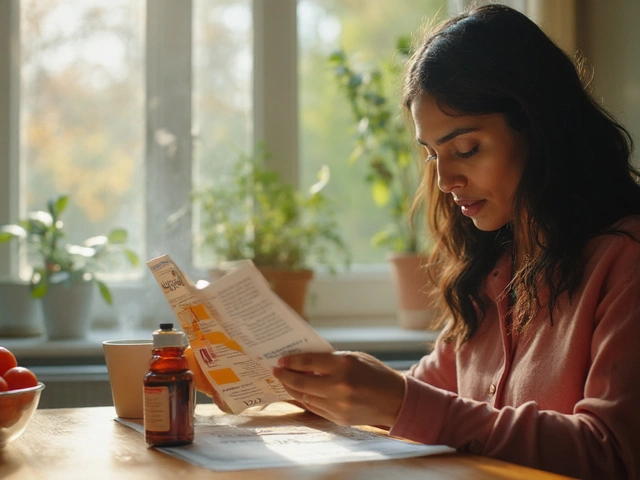
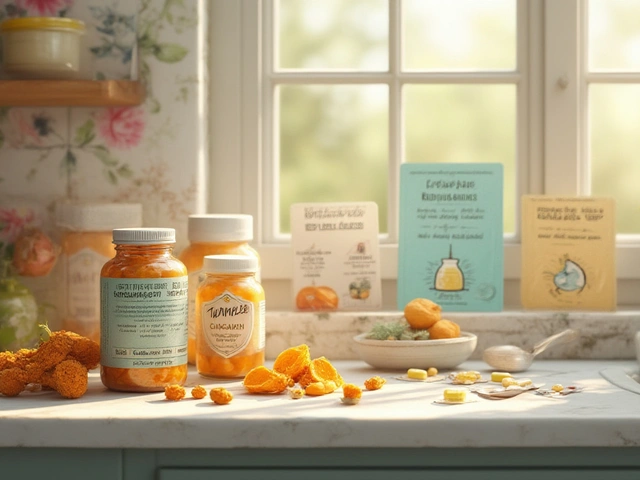

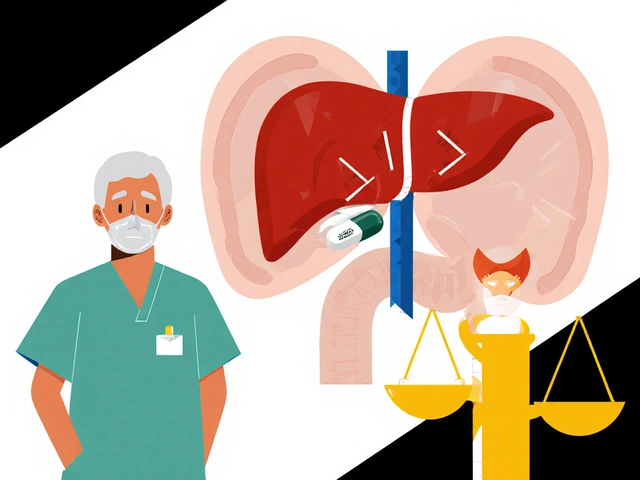
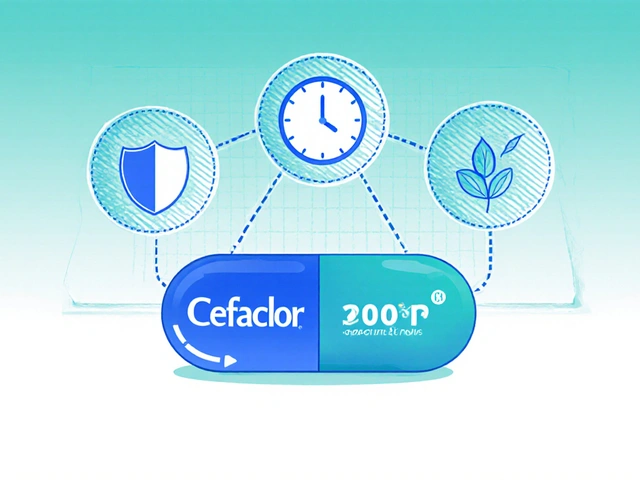
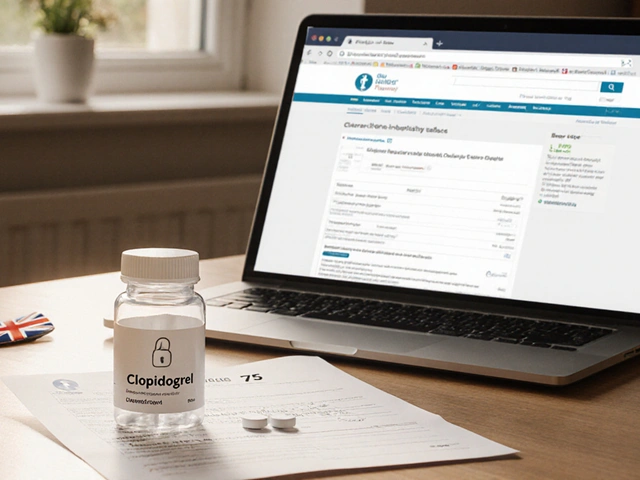

Bruce T September 5, 2025
Look, the supplement industry has been hawking tomato pills like they’re miracle cures, and most people just swallow the hype without a second thought. It’s a classic case of profit over principle, pushing a half‑baked science to line pockets. If you’re not reading the fine print, you’re basically funding a racket that pretends vitamins are a shortcut to health. The reality is that a balanced diet does what these capsules claim, just without the extra cost. So before you pop another softgel, ask yourself if you’re buying wellness or a marketing gimmick.
Darla Sudheer September 6, 2025
Tomato supplements can be handy when your meals are inconsistent but they’re not a substitute for real food, especially cooked tomatoes with a bit of oil.
Elizabeth González September 7, 2025
The discourse surrounding lycopene supplementation invites a broader reflection on how modern nutrition intersects with reductionist thinking. By isolating a single phytonutrient, we risk overlooking the synergistic matrix that whole foods provide. Empirical studies suggest modest physiological effects, yet they must be contextualized within a diet rich in diverse antioxidants. Consequently, the ethical imperative is to prioritize dietary patterns that naturally embed lycopene rather than relying on encapsulated extracts. In doing so, we align personal health goals with a holistic view of nourishment.
chioma uche September 8, 2025
It’s infuriating that foreign corporations flood our market with cheap tomato extracts while ignoring the rich, home‑grown varieties we cultivate here. You think imported softgels are any better? Think again – they often lack the quality controls we enforce on local produce. Supporting indigenous farmers is the real antidote to this health‑hype. Give your body what it deserves: tomatoes harvested on native soil, not a generic pill from an overseas lab.
Satyabhan Singh September 9, 2025
When evaluating lycopene supplementation, it is essential to adopt a multidisciplinary lens that encompasses biochemistry, epidemiology, and cultural dietary practices. The bioavailability of lycopene is markedly enhanced when the compound is co‑ingested with lipids, a principle that has been elucidated through numerous pharmacokinetic studies. Moreover, the thermally processed tomato products prevalent in South Asian cuisine provide a natural matrix that mirrors the oil‑based softgels promoted by manufacturers. From a public health perspective, the incremental reductions in systolic blood pressure observed in meta‑analyses, although modest, contribute to a cumulative risk mitigation strategy when combined with other lifestyle interventions. Likewise, the attenuated LDL concentrations reported in randomized controlled trials should be interpreted as part of a broader lipid management regimen rather than as a standalone remedy. The photoprotective effect on epidermal erythema thresholds, while statistically significant, remains a supportive adjunct to traditional sunscreen practices, reinforcing the principle of layered defense. In the domain of urological health, the heterogeneous findings on prostate‑specific antigen modulation underscore the necessity for larger, well‑controlled investigations before firm clinical recommendations can be made. Safety data consistently indicate a favorable tolerance profile for dosages up to thirty milligrams per day, provided that concomitant use of anticoagulants is monitored. Pregnant individuals are advised to derive lycopene primarily from dietary sources, given the paucity of rigorous safety assessments for high‑dose supplementation in this population. From a socioeconomic viewpoint, the cost‑effectiveness of supplementing versus enhancing dietary intake hinges upon local market prices for quality tomato products. In regions where fresh tomatoes are abundant and inexpensive, the marginal benefit of an encapsulated form may not justify the expense. Conversely, in food‑insecure settings, a low‑cost, standardized lycopene capsule could serve as a pragmatic bridge to adequacy. Cultural acceptance also plays a pivotal role; societies with culinary traditions that incorporate cooked tomatoes may exhibit higher baseline lycopene status, thereby diminishing the incremental impact of supplementation. Ultimately, clinicians should individualize recommendations, aligning the dosage and form of lycopene with each patient’s nutritional baseline, comorbid conditions, and therapeutic goals. By integrating scientific evidence with culturally resonant dietary practices, we can foster a nuanced approach that respects both efficacy and tradition.
Keith Laser September 9, 2025
Oh sure, just swallow a few milligrams of tomato juice in a pill and you’ll magically transform into a cardio‑god – if only life were that easy. But hey, if the idea of actually cooking with olive oil and tomatoes sounds like too much effort, the softgel is there to save the day. Remember, consistency beats intensity; taking that little capsule daily is more realistic than a nightly marathon of kale smoothies. So set a reminder, pair it with your fattest meal, and watch those tiny numbers inch in the right direction. It won’t replace hard work, but it can be the courteous sidekick you didn’t know you needed.
Winnie Chan September 10, 2025
Yeah, because a tomato pill is the ultimate life hack.
Kyle Rensmeyer September 11, 2025
They dont want you to know the real story behind lycopene the big pharma labs hide data and push cheap extracts to make us dependent 😏
Rod Maine September 12, 2025
Honestly, the whole notion of greening your diet with lycopene supplemants is a bit overhyped – real culinary arts demand fresh tomato sauce simmered with olive oil, not some cheap softgel that pretends to be gourmet. If you want true antioxidants, just eat a proper marinara, not that synthecized nonsense.
Othilie Kaestner September 13, 2025
American supplement giants think they’ve nailed lycopene, but they ignore the centuries‑old tomato dishes we grew here that do the job better. No need for foreign pills when our backyard tomatoes already pack the punch.
Sebastian Samuel September 13, 2025
💊💥 If you’re not taking a lycopene softgel with your favorite fatty meal, you’re basically leaving your skin and heart on the bench. Grab a capsule, pop it with lunch, and let the antioxidants do the heavy lifting! 🚀
Annette Smith September 14, 2025
Lycopene can help lower bad cholesterol a bit and protect skin from sun, but real food like tomato sauce is still the best source.
beth shell September 15, 2025
Exactly, incorporating a simple cooked tomato dish a few times a week often gives the same benefit without needing a supplement.
khushali kothari September 16, 2025
From a nutrigenomics perspective, the transcriptional modulation induced by lycopene via the Nrf2‑Keap1 axis underscores its role in oxidative stress mitigation. However, the dose‑response curve exhibits a hormetic profile, necessitating calibrated intake to avoid potential pro‑oxidant effects at supraphysiological concentrations.
Brandon Smith September 17, 2025
The marketing narrative surrounding lycopene capsules is riddled with selective citation and overstated claims; a rigorous appraisal of the primary literature reveals effect sizes that are statistically significant yet clinically negligible. Consumers should demand transparent batch analysis and independent verification rather than accept manufacturer‑driven hype.
darwin ambil September 17, 2025
🤔 True, the data isn’t a miracle, but a small boost is still better than nothing when combined with a solid diet. 🌱
Kelvin Van der Maelen September 18, 2025
What a rollercoaster – one minute you’re told your heart will thank you, the next you’re warned about weird orange skin. The drama never ends!
Joy Arnaiz September 19, 2025
The saga of lycopene supplementation reads like a cautionary tale, where hopeful promises collide with the sober reality of modest physiological shifts, leaving the discerning reader to navigate between enthusiastic hype and measured scientific restraint.